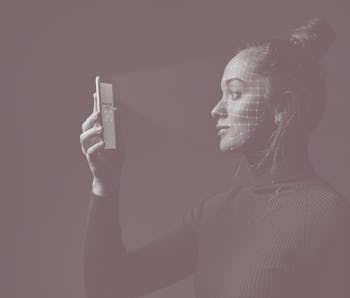Tech
TikTok won’t say why it’s now collecting your biometric data
The app will ask permission before storing your 'faceprint' and 'voiceprint' — if you happen to live in a state where there are laws around that sort of thing.

The latest version of TikTok’s privacy policy gives the app permission to collect some surprisingly invasive information from users. Most notably, the new privacy policy adds a short section about how TikTok “may collect biometric identifiers and biometric information” from users including “faceprints” and “voiceprints.” That would make sense if it was to lock down your account or something similar... but worryingly, TikTok won’t say.
The language here comes across as a little vague for something with so much potential to be invasive. Furthermore, when asked for comment on the matter by TechCrunch, TikTok opted not to explain which product developments might require this new biometric information.
This would be cause for some concern in any app’s privacy policy — seeing as users are essentially forced to agree to these terms by using the app — but TikTok’s privacy measures, in particular, have been the subject of much scrutiny from the U.S. government and other watchdogs. The purposeful vagueness here isn’t a great look for TikTok.
New image collection policies, too — There’s another, less vague update to the transparency policy as well. In the same section — “Information We Collect Automatically” — TikTok explains that it may collect information about the images and audio in users’ content. This includes scenery, location, “body features and attributes,” and the words being spoken.
This is new but not shocking. Almost every social network collects information on the content posted within its walls, at this point, for purposes like improving its text-to-speech feature, augmented reality filters, and, of course, for personalized ad targeting. TikTok’s policy specifies that image and audio information is collected “to enable special video effects, for content moderation, for demographic classification, for content and ad recommendations, and for other non-personally-identifying operations.”
WTF is a faceprint? — In contrast to its openness about this image and audio collection, TikTok’s language about these “faceprints” and “voiceprints” is decidedly vague. It’s very unclear what these even are, never mind how TikTok plans to use them. The policy states that TikTok will “seek permission” before collecting this data, but it’s also unclear how, exactly, TikTok would go about asking. And, as TechCrunch points out, only a few states have specific laws around biometric privacy — meaning TikTok could just go ahead and collect that data from users elsewhere.
TikTok is still in a strange limbo, trusted by hundreds of millions of people around the world but frequently decried and disparaged by security experts who think something’s still a little off about the network. (Not to mention those who worry over the app simply for its connections to China.)
The company has recently put measures in place to fight its way out of this limbo, like the creation of a transparency hub to “set the record straight.” Updating its privacy policies with opaque information seems antithetical to that mission, though.
Not illuminating — When asked for comment, a TikTok spokesperson said: “As part of our ongoing commitment to transparency, we recently updated our Privacy Policy to provide more clarity on the information we may collect.” Because that really sheds light on the situation.
In classic TikTok fashion, users are complaining more about being asked to read the new policy over and over again than about its contents. Perhaps they’d be more likely to read those updates if the company actually explained its motives.